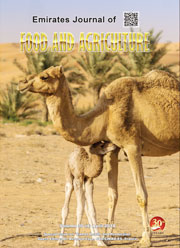Optimization of submerged fermentation conditions for glucanase production by Burkholderia pyrrocinia B1213 using Jiuzao
DOI:
https://doi.org/10.9755/ejfa.2023.v35.i5.3091Abstract
This study optimized the fermentation conditions for producing glucanase from Burkholderia pyrrocinia B1213 using Jiuzao, a residue from Baijiu distillation, as the carbon source. The effects of Jiuzao particle size and concentration, type of nitrogen source, urea concentration, initial pH, inoculum size, loading volume, shaking speed, temperature, surfactant type and incubation time on glucanase production by B. pyrrocinia B1213 were investigated separately through single factor design. Then, five variables, Jiuzao concentration, inoculum size, initial pH, temperature and incubation time, were found to significantly affect glucanase production using the Plackett-Burman design. Following, the optimal conditions for glucanase production by B. pyrrocinia B1213 were found using the steepest ascent path and response surface methodology designs as: particle size, 40-60 mesh; Jiuzao concentration, 58.4 g/L; urea concentration, 8 g/L; initial pH, 6; loading volume, 15 mL/250 mL; inoculum size, 0.63% (v/v); temperature, 26 °C; shaking speed, 160 rpm; and incubation time, 120 h. Under these conditions, the glucanase activity of the B. pyrrcinia B1213 strain was 1336 U/mL, producing the biological enzymes needed in Baijiu making from a by-product. This study has provided experimental data and theoretical information for using B. pyrrcinia B1213 in Baijiu production.
Keywords: Burkholderia pyrrocinia; Glucanase; Response surface methodology; Fermentation conditions; Jiuzao
Downloads
Published
How to Cite
Issue
Section

This work is licensed under a Creative Commons Attribution-NonCommercial 4.0 International License.











 .
. 